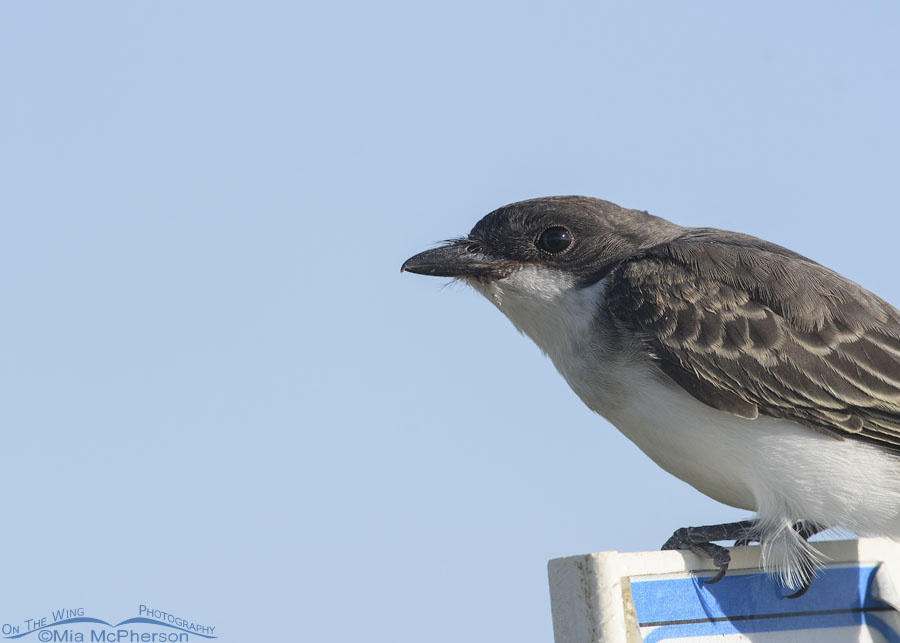 Young Eastern Kingbird close up – Nikon D500, f8, 1/1000, ISO 400, +1.0 EV, Nikkor 500mm VR with 1.4x TC, natural light
Young Eastern Kingbird close up – Nikon D500, f8, 1/1000, ISO 400, +1.0 EV, Nikkor 500mm VR with 1.4x TC, natural light
While I was driving around the auto tour loop of Bear River Migratory Bird Refuge last month, I had a nice opportunity to photograph a young Eastern Kingbird.
I had been focused on taking images of bees, beetles, and butterflies on Common Sunflowers when I heard an insistent bird call. Looking away from my viewfinder, I spotted the young kingbird perched on a sign about 12 to 15 feet in front of my Jeep.
The immature Eastern Kingbird was too close for full-body photos. I decided to take close-up images of the striking young bird rather than start my engine to move further away. I was only able to take 16 images of the kingbird before it flew to the other side of a canal. Had I moved my Jeep, I would have missed taking those photos altogether.
I haven’t seen as many Eastern Kingbirds this year as I would have liked to have seen. The road to the auto tour route and the loop are great spots to find the dapper Eastern Kingbirds. However, I’ve been avoiding locations where deer flies are present in large numbers. The cattle that have had the run of part of the refuge seem to attract the deer flies, which sadly means I wasn’t there much this summer at all.
I probably won’t be there much next year either because the refuge has already announced on their website that they were looking for cattle for next year. The use of cattle on the refuge is intended to help mitigate the problem with phragmites. Phragmites is a tall, invasive reed grass that is taking over the refuge.
I’m glad I was able to find and photograph this young Eastern Kingbird this year.
Life is good.
Mia
Click here to see more of my Eastern Kingbird photos plus facts and information about this species.


I am very glad that you could see this charmer and hope that the phragmite problem can be controlled.
Hopefully they’ll get control of the phragmites, and return the refuge to wildlife. https://www.ksl.com/article/50256216/how-cows-are-helping-solve-utah-lakes-phragmites-problem